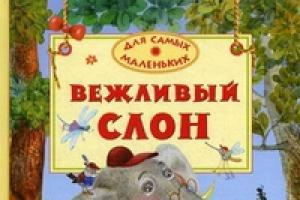T.n. Valentine's Day (also known as Valentine's Day) is one of the clear examples of how they are trying to impose completely alien holidays on the Russian people (and especially young people). And, unfortunately, they are imposing it: the celebration of February 14 “Valentine’s Day” has become practically a tradition in “democratic” Russia, actively supported and promoted by the media and representatives of show business. Actually, all this vulgarity with the exchange of “Valentines”, chocolates, perfumes and jewelry has nothing to do with the day of remembrance of the Catholic saint. Rather, it is a true holiday for retailers and other trade organizations. The moral and spiritual content of the holiday, freshly baked for Russia, is also very dubious: rather, it preaches easy love and sex without obligations. Given the already shaky moral foundations of our society, such a holiday does not strengthen them, but rather romanticizes and popularizes the frivolity of intergender relations.
Claudius (megabook.ru)
The Catholic nature of the holiday, alien to Orthodox Russia, could not even be mentioned in this regard. Unless we forget that the Catholic Church is very skeptical about this holiday. Moreover, there is still no clarity on the question of which Saint Valentine we are talking about. After all, Saint Valentine is the name of several early Christian martyred saints. Information about their lives is extremely scarce, as a result of which it is impossible to even reliably establish whether they were really different persons, or whether we are talking about different lives of the same saint. Martyrologies mention the Roman priest Valentine, who was beheaded around 269 AD. e., presumably for refusing to renounce Christ before the Emperor Claudius, as well as Valentin, the bishop of Interamna (the modern Italian city of Terni), known for miraculous healings and executed for converting the mayor’s son to Christianity. In connection with the holiday of February 14, a martyr with the same name is also mentioned, who suffered in the Roman province of Africa... In general, complete confusion.

Postcards for Valentine's Day
In the late Middle Ages in France and England, the life of St. Valentine gradually began to acquire legends associated with the secret wedding of couples in love. According to them, Emperor Claudius II forbade soldiers to marry so that they would not be distracted from their service. Valentin secretly married those who wished and was sentenced to death for this. In Orthodoxy, by the way, the memory of both martyrs is celebrated on different days: July 6 (July 19 according to the Julian calendar) - the memory of Valentin the Roman, hieromartyr, presbyter, and July 30 (August 12 according to the Julian calendar) - the memory of Valentin of Interam, hieromartyr, bishop.

Faun (megabook.ru)
As for Catholics, during the canonization of two saints in 469, Pope Galasius declared February 14 as St. Valentine's Day: on this day, starting from the 5th century, the Catholic Church celebrated the memory of both Valentine the Roman and Valentine, the bishop of Interamna. However, there are very good reasons to suspect that the Roman high priest, setting the date of the holiday, thus simply tried to cover up the day of pagan Lupercalia with the day of remembrance of a Christian martyr.

Cyril and Methodius (megabook.ru)
Lupercalia, we recall, in Ancient Rome the name was given to annual erotic festivals in honor of the goddess of “feverish” love Juno Februata and the god Faun, patron of flocks (Luperc is one of his nicknames), which took place from 13 to 15 February. The main characters in this orgy were naked men who whipped women with goatskin belts. Women willingly exposed themselves to blows, believing that this, in modern language, sadomasochism would grant them fertility and easy childbirth. At the end of the festivities, the women also stripped naked. Lupercalia became so popular (members of noble families also participated in them) that even when many other pagan holidays were abolished with the advent of Christianity, this one still existed for a long time. Therefore, in a vain attempt to abolish these pagan orgies, Gelasius, as suggested, decided to “Christianize” the holiday, naming it in honor of the martyr Valentine. Cover up, so to speak, the shame.

Valentine's Day Traditions
However, the Catholic Church, perhaps aware of the dubious basis of this “holiday,” tried not to particularly promote it, and since 1969 generally classified it as “optional”: St. Valentine was excluded from the list of saints whose memory is obligatory for liturgical veneration. At the moment, the memory of the saint is celebrated at the local level in a number of dioceses. On February 14th, the Catholic Church is now - attention! — officially honors the Slavic enlighteners, Saints Cyril and Methodius, Equal-to-the-Apostles, despite the fact that during their lifetime the creators of the Slavic alphabet had to endure hard times from the Roman clergy.
Or Valentine's Day - a holiday that is celebrated all over the world on February 14th. There are several versions about the origin of this holiday, according to one of which Valentine’s Day was once called the “Bird Wedding”, since it was believed that it was on this day, February 14, that birds choose a mate. According to another version, many years ago a Christian priest named Valentin performed a wedding ceremony prohibited by the Roman emperor, for which he was executed on February 14 and since then he has been considered the patron saint of lovers.
Another legend dates back to the time when Rome was pagan. It tells how the Christian preacher Valentin was imprisoned for his faith and, in front of everyone, healed the jailer’s daughter and gave her sight. He was sentenced to death, and on February 13, on the eve of his execution, he sent her a tender farewell letter.
The next legend combines the previous two. They say that Valentin, being the Bishop of Terni, showed special affection to young lovers, helped write letters with declarations of love, reconciled those who had quarreled, and gave flowers to the young spouses. His arrest was allegedly caused by the fact that the Roman Emperor Julius Claudius II did not allow soldiers of the imperial legions to fall in love and get married, and Valentine secretly married legionnaires. When Valentine was in prison, he, as legend has it, fell in love with the blind daughter of his executioner and healed her. Before his execution, he left her a farewell note signed “Your Valentine.”
Subsequently, as a Christian martyr who suffered for the faith, Valentine was canonized by the Catholic Church. And in 496, Pope Gelasius declared February 14th Valentine's Day. Since then, lovers have revered Saint Valentine and consider him their intercessor. In memory of the letter written by Valentine to his beloved, on this day it is customary to give each other Valentine's cards in the form of hearts, with best wishes, declarations of love, marriage proposals or just jokes.
Later, in the Catholic Church, Valentine's Day began to be considered an optional holiday. Since 1969, as a result of the reform of worship, Saint Valentine was removed from the liturgical calendar of the Catholic Church (along with other Roman saints, information about whose lives is contradictory and unreliable).
Despite this, Valentine's Day, the patron saint of all lovers, has received truly worldwide recognition; it has become popular in many countries, among believers and non-believers, regardless of nationality and religious denominations. In addition, in many countries there are analogues to Valentine's Day, and often residents of these countries celebrate the holiday twice - in February, on Valentine's Day, and on their traditional day.
In Russia, this holiday began to be celebrated most widely and openly since the early 1990s. A kind of domestic analogue of St. Valentine's Day or Valentine's Day in Soviet times was International Women's Day on March 8, and currently - the All-Russian Day of Married Love and Family Happiness, celebrated on July 8. On this day, the Russian Orthodox Church celebrates the day of remembrance of Saints Peter and Fevronia, who from ancient times were considered patrons of family and marriage in Rus'.
The love story of Peter and Fevronia is described in detail and colorfully in the famous Old Russian "Tale of Peter and Fevronia." According to the Lives of the Saints, the blessed Prince Peter ascended the Murom throne in 1203. A few years earlier, he fell ill with leprosy, from which no one could cure him. In a dream, it was revealed to the prince that the pious peasant maiden Fevronia could do this. The prince fell in love with Fevronia for her piety, wisdom and kindness and vowed to marry her after healing. Fevronia cured the prince and married him. The holy spouses carried love and fidelity to each other through many trials. They became famous for their righteous life and mercy.
Saints Peter and Fevronia died on the same day and hour, July 8, 1228, having previously taken monastic vows with the names David and Euphrosyne. The bodies of the saints were placed in one coffin. The Russian Orthodox Church canonized Peter and Fevronia as saints. Today their relics rest in the Holy Trinity Convent in Murom.
On the initiative of the residents of the city of Murom (Vladimir region), where the relics of the holy spouses rest, the pre-revolutionary traditions of celebrating the day of Sts. Peter and Fevronia. This idea was supported by deputies of the State Duma of the Russian Federation and in 2008 the holiday received official government status.
On March 26, 2008, at a meeting of the Federation Council Committee on Social Policy, the Federation Council unanimously approved the initiative to establish a new public holiday - the All-Russian Day of Married Love and Family Happiness. In 2008, Russia celebrated July 8 for the first time as a national Day of Family, Love and Fidelity.
However, unlike its Western counterpart, the Russian holiday has several patron saints. The patron saints of family well-being are considered to be the pious couple - Joachim and Anna, into whose family the Mother of God was born. On August 29, the Orthodox Church honors the memory of the miraculous Fedorov Icon of the Mother of God, which is revered as the patroness of brides, family well-being, the birth of children in childless couples, and helps in difficult childbirths. In Russia there is another holiday during which Orthodox Christians pray for the gift of a prosperous family life - this is the Intercession of the Blessed Virgin Mary. From the Intercession of the Day - October 14 - weddings began to be celebrated, and on this day the girls went to church to pray that the Lord would send them good grooms .
The material was prepared based on information from RIA Novosti and open sources
Saints Peter and Fevronia have been considered patrons of family and marriage in Rus' for almost eight centuries.
And for all eight centuries, residents of the city of Murom have been celebrating the Day of Remembrance of the holy spouses Peter and Fevronia in the church.
According to the Lives of the Saints, the blessed Prince Peter ascended the Murom throne in 1203. A few years before, he fell ill. His body was covered with scabs and ulcers. And only the pious peasant maiden Fevronia was able to cure the prince of leprosy. The prince vowed to marry her after healing. Fevronia, having cured the prince, married him. The couple carried love and loyalty to each other through many trials. They became famous for their righteous life and mercy.
Peter and Fevronia died on the same day and hour, July 8, 1228, for, according to the views of the Church, “husband and wife are united into one being - one person with one soul, but in two persons.” Well, what if death cuts off one being one part, one half, then how is it possible for the other to remain alive?”

The Russian Orthodox Church canonized Peter and Fevronia as saints. Their relics rest in the cathedral church of the Holy Trinity Convent in Murom.
In 2008, in Russia, the Day of Remembrance of Saints Peter and Fevronia was declared the “All-Russian Day of Married Love and Family Happiness” (or “Day of Family, Love and Fidelity”). Another “unofficial” name for this public holiday is Lovers’ Day.
The attitude of Russians towards both holidays is very ambiguous. Thus, part of the country's population believes that in Russia only the Day of Saints Peter and Fevronia should be celebrated, and the holiday of Saint Valentine's Day is considered absolutely unnecessary and alien to Russians. They explain their opinion by the fact that the majority of the inhabitants of our country are Orthodox, not Catholics.
Russian being the patrons of eternal love and marital fidelity, was officially established on July 8, 2008. The capital of the holiday became Murom, where the bodies of both saints were buried. The Murom authorities were one of the most active initiators of the establishment of the holiday - at the insistence of the city mayor, a corresponding appeal signed by 15 thousand people was even sent to the State Duma. Deputies of the Lower House supported the idea
The wife of former Russian President Dmitry Medvedev, Svetlana Medvedeva, also became one of the main initiators of the revival and popularization of this holiday. She suggested making chamomile a symbol of the holiday.
Photo: www.russianlook.com / russianlook.ru
The main festive events dedicated to the Day of Peter and Fevronia are traditionally held in Murom. Every year on July 8, many guests come here, both from the region and from all over Russia. It can’t do without VIPs - politicians and musicians. As a rule, Svetlana Medvedeva also comes to the holiday every year.
This year the celebration includes gold, diamond and blessed anniversaries. There were 164 of them in the Vladimir region.
As they say in the Lives of the Saints, the blessed Prince Peter ascended the Murom throne in 1203. However, several years before this, leprosy “fell” him - Peter’s entire body was covered with ulcers and scabs. Neither doctors nor medicine could help the prince. Only the pious peasant maiden Fevronia, whom Peter promised to marry after healing, was able to cure him. The prince kept his word. They became famous for their righteous life and mercy.
It is curious that Prince Peter is not mentioned in chronicle sources. Some researchers identify Peter and Fevronia with Prince David Yuryevich and his wife, known from the Murom chronicles. Prince David ruled in Murom from 1205 to 1228 and took monastic vows with the name Peter; almost nothing is known about his wife.
The Russian Orthodox Church canonized the saints in 1547, and soon after that the famous “Tale of Peter and Fevronia of Murom” was compiled. Researchers believe that the story combines two folk-poetic plots: a fairy tale about a fiery serpent and a fairy tale about a wise maiden.
Another interesting fact. Despite the existing beautiful legend about the love of Peter and Fevronia, the Tale of the Spouses says that Prince Peter reluctantly married Fevronia. Their marriage, most likely, was childless, since the Tale does not say anything about the heirs, and the joint life of the prince and princess ended with the monastic vows of both spouses.
2. Day of Love in Georgia
In Georgia, Love Day is celebrated annually on April 15. The holiday was established at the end of the 20th century on the initiative of one of the figures in Georgian show business, Besik Chubinidze, and was conceived. However, it turned out that local residents began to celebrate two holidays of love - their own and, as before, the Western European one.
As on Valentine's Day, on the Day of Love, lovers traditionally give each other gifts - flowers, sweets, perfumes, confess their feelings or propose marriage.
3. Day of Spiritual Love or Gergetoba
This is another Georgian holiday dedicated to love, celebrated on July 16th. Unlike the previous holiday, which is secular, was proclaimed by the country's parliament and is dedicated to the bright feeling that arises between a man and a woman, this one was established by the Georgian Orthodox Church and is dedicated specifically to spiritual love. It owes its revival to His Holiness Catholicos-Patriarch of All Georgia Ilia the Second.
The Day of Spiritual Love is most widely celebrated in the Trinity Church in Gergeti, where special services are held in honor of the holiday and a festive prayer service is read.
4. Tu-Be Av
This is a Jewish holiday, which in modern Israel is celebrated as the Day of Love and Tu Be Av is special among the Israelis, because it was on this day, many centuries ago, that marriages between girls and boys from different tribes were finally allowed.
Wedding Photo: http://gov.cap.ru/
Tu Be Av is celebrated on August 15, when, according to the Pentateuch, the pestilence that destroyed the people from Egypt stopped. Such a punishment was God's punishment for the entire generation that came out of Egypt, which committed two serious sins - it did not want to go to the Land of Israel and created the golden calf.
5. World Kiss Day
This holiday is celebrated all over the world on July 6th. It was originally invented at the end of the 19th century in Great Britain, where they decided that a kiss as one of the manifestations of love was worthy of its own holiday. Kiss Day received international status only at the end of the twentieth century, when it was approved by the United Nations.

Photo: www.globallookpress.com
Traditionally, on July 6, various events and competitions related to kissing are held in various cities around the world. For example, there is a competition
6. International Hug Day
Originally founded in the United States in 1986 as National Hug Day and later gaining popularity around the world, this holiday is celebrated on January 21st. Holiday tradition On this day, you can embrace even a stranger and give him a piece of your warmth.
Despite the fact that the holiday is very young, its author is unknown. According to one version, the holiday was invented by students who really like to hug when they meet.
According to psychologists,
Experts also say that friendly touches increase immunity, stimulate the central nervous system, increase the level of hemoglobin in the blood, as well as the hormone oxytocin, which causes a favorable disposition towards other people.
In Russia, a Christian holiday designed to become an analogue of the Catholic Valentine's Day is called "Day of Married Love and Family Happiness."
It will be celebrated July 8- on the day of remembrance of Orthodox saints Peter and Fevronia, who ruled the Murom land in the 13th century.
According to legend, the peasant woman Fevronya had the gift of insight and healing. When she found out that Prince Peter of Murom was suffering from an incurable disease, she herself offered to cure him. But she said that she would not take any reward, just a promise to marry her.
The prince kept his word - they got married and were an example of fidelity and love. In old age they took monasticism and died on the same day and hour.
They bequeathed to bury themselves together in a specially prepared coffin with a thin partition in the middle. But the temple servants considered it impious to bury monks in the same coffin and dared to violate the will of the deceased.
Twice their bodies were carried to different temples, but twice they miraculously found themselves nearby. So they buried the holy spouses together near the cathedral church of the Nativity of the Blessed Virgin Mary, and many believers found miraculous healing here. Now their relics rest in the Murom church of the Holy Trinity Monastery. 
Thus, for a wedding you can give paired icons of Saints Peter and Fevronia to the newlyweds, because they are the patrons of marital love and family happiness!
Valentine is a Catholic saint, and the Christian Church honors on February 14 the memory of the holy great martyr Tryphon, to whom the Lord gave the power to cast out demons and heal from bodily ailments. According to legend, Saint Tryphon became especially famous in the first half of the 3rd century for delivering the daughter of the Roman Emperor Gordian from evil spirits.
So on St. Tryphon’s day, you can give each other not valentines, but triphonka.
By the way, Moscow is the only city in Russia in which a temple was built to the Holy Great Martyr Tryphon in gratitude for his miracle.
The legend about the miracle of Saint Tryphon says:

This happened during the time of the Moscow prince Ivan Kalita. He went falconry, the servants released the birds, and everyone returned with prey, except for the prince’s favorite falcon.
Then the prince ordered the boyar Trifon Patrikeev, under pain of execution, to find the bird.
The falconer wandered through the forest for three days, but to no avail. Then he prayed to his patron Tryphon, asking him to save him from execution.
And immediately the saint appeared to him in the form of a young rider on a white horse with that same falcon in his hand and gave Patrikeev the bird.
In the same year, the boyar founded a temple on this site. Since then the temple has stood. It contains a piece of the relics of Saint Tryphon and a miraculous icon. On the site of the former forest there is now Trifonovskaya Street, in the Maryina Roshcha area.
This miraculous icon saves from sudden death, from the wrath of rulers and other misfortunes.
Material prepared by MariaR
Photos newsvo.ru and rusk.ru








